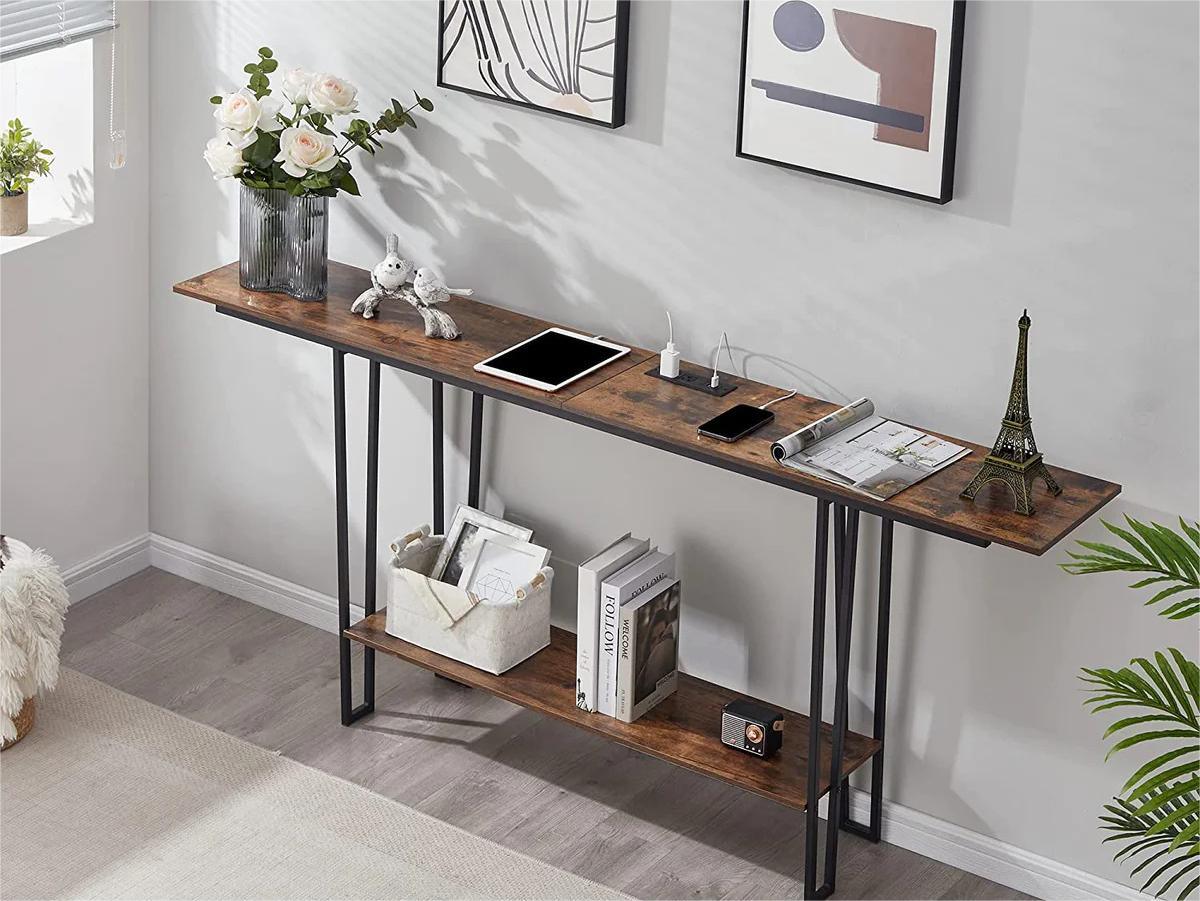Long console tables have been a classic furniture piece in interior design for centuries. With their simple yet elegant design, they add both functionality and aesthetic appeal to any room of the house. In this blog post, we will explore the rich history, design concepts, and intents behind long console tables.
Historical Origins
Console tables have their origins in 17th-century France during the Baroque period. They were initially created to be placed against a wall, often positioned below an elaborate mirror or painting. These early console tables were known for their intricately carved details and grandeur, reflecting the opulence of the time.
Over time, the design of console tables changed to accommodate practical use and functionality. The addition of drawers, shelves, and cabinets enabled long console tables to serve a variety of purposes in different rooms of the house.

Evolution of Design Concepts
Long console tables have evolved in style and functionality over time to suit changing design trends and needs.
- **Simplicity of Design**: With the emergence of the Neoclassical movement in the 18th century, console tables began to exhibit simpler and more refined designs. The addition of tapered legs and the removal of elaborately carved details led to the birth of the long console table, which is perfect for modern-day interior design.
- **Functionality**: In the 19th century, with the Victorian style of ornate furniture taking a back seat, functionality became essential. The long console table evolved into a versatile piece of furniture with ample storage space, drawers, and compartments to suit various needs.
- **Art Nouveau Influence**: The Art Nouveau movement brought organic and flowing forms into console table designs in the late 19th and early 20th centuries. The use of curved metal and glass with sinuous lines and floral motifs created long console tables' designs that were both beautiful and functional.
- **Modern Minimalism**: In the 20th century, long console tables embraced the principles of modernism, focusing on minimalism and functionality. Their designs were sleek, often featuring metal or glass materials. This minimalist approach made long console tables a popular choice for contemporary interiors.

Intentions and Uses
Long console tables serve various purposes in interior design. Here are some of the common intentions and uses for long console tables:
- **Foyer Statement Decor**: Long console tables placed in entryways can create a statement piece that catches the eye immediately. They serve as a surface for keys, wallets, and other small essentials while also providing a space for decorative items like vases or sculptures.
- **Living Room Needs**: In living rooms, long console tables add a layer of sophistication while providing ample space for displaying decor items and books. The cabinets and drawers in the long console table also offer additional storage options.
- **Dining Room Statement Piece**: Long console tables are ideal for creating a statement piece in a dining room. The table can be used to display decorative items like candles, vases, and other tableware.
- **Home Office Space**: Long console tables are perfect for home offices, with ample space to hold laptops, printers, and other essential electronics. They also offer drawers to store office supplies, making them both beautiful and practical.

Conclusion
In summary, long console tables have a rich history with a design that has evolved over time to accommodate varying needs and preferences. With practical functionality and versatility, they serve multiple purposes in different rooms of the house. Whether you opt for a traditional, contemporary, rustic, or industrial style, there is a long console table perfect for your design tastes.

